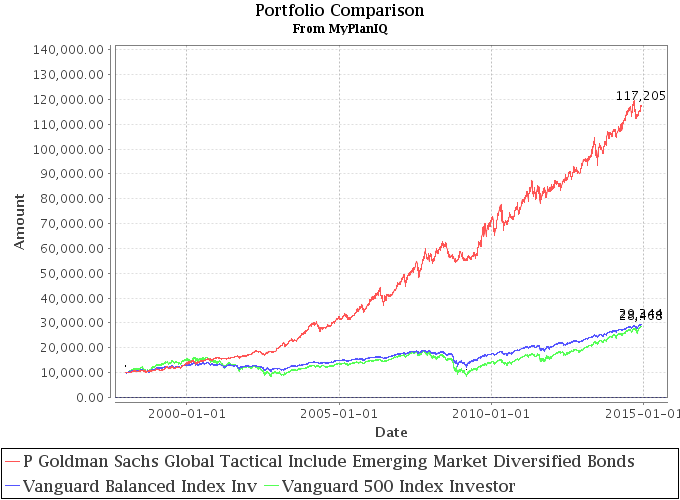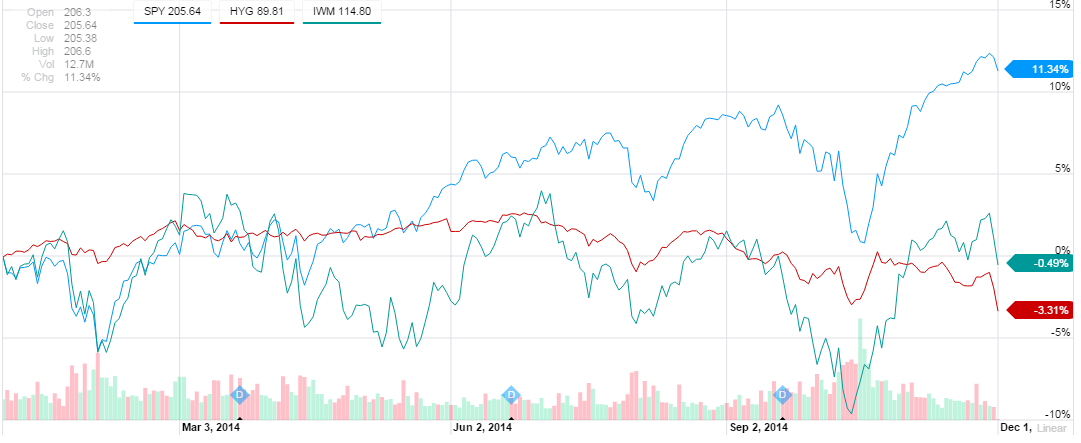Key Issues of Investment Strategies
Over the years, we have received two key questions regarding our investment strategies. Even though they have been addressed by one of our newsletters, we nevertheless believe it is critical for our users to fully understand their answers. In this newsletter, we attempt to summarize our answers.
As always, we remind our readers to look at our short summaries of our important newsletters in newsletter collection link.
How do I know which strategies to trust?
This question was answered in our newsletters:
- A strategy should have strong intuitions and plausible reasons behind it
- One should look at a strategy in a long term, regardless whether the strategy is passive (strategic or buy and hold) or active (such as tactical that utilizes short to intermediate term asset behaviors). There is no sure win strategy in any given short period of time.
- when you should get out a strategy by asking important questions such as whether the strategy has a fundamental flaw or it is just a short term hiccup. Furthermore, it is equally important to understand whether that is an implementation issue.
Which strategies should I use?
- July 16, 2012: Understand The Behavior of Investment Strategies
- December 10, 2012: How Asset Allocation Strategies Performed In Secular Market Trends
- October 8, 2012: Asset Allocation Strategies Have Cycles Too
- July 29, 2013: Strategic Asset Allocation: The Good, The Bad And The Ugly
- July 22, 2013: Tactical Asset Allocation: The Good, The Bad And The Ugly
- May 19, 2014: Consistency, The Most Important Edge In Investing: Strategic Case
- August 18, 2014: Consistency, The Most Important Edge In Investing: Tactical Case
For each strategy, the following table shows the two key qualities:
| Intuitions | Expected Returns | |
| Strategic Asset Allocation | Diversification | Equities deliver above inflation returns while bonds are stabilizers |
| Tactical Asset Allocation | Momentum exists in nature, in human behavior and social events | It is recognized momentum factor can deliver market beating average return in many research results |
Their pros and cons:
| Early Bull | Late Bull | Bear | Side Way | |
| Strategic Asset Allocation | Good:rebalancing actually enables more exposure (allocation wise) to beaten down risk assets | Good:always riding on risk assets and rebalancing actually takes some profit off the table | Bad:holding falling assets can actually ride the falling trends all the way down |
OK: no loss for risk assets but bonds can actually generate some income. Risk assets with dividends can cushion more |
| Tactical Asset Allocation | Miss: It has a lag due to confirmation of rising trends | Good:invest in high performing assets that can even outperform market indices | Good:reduced risk asset allocation and exposure to other ‘safe’ assets such as treasury bonds | Bad:frequent switching results in buy high sell low. These can amount to large loss over time |
Notice when we say Good, we do not necessarily mean it will always out perform a market index such as VFINX (Vanguard (S&P 500) Index) or VBINX (Vanguard Balance (60% stocks/40% bonds). Again, these strategies can even under perform against these benchmarks in those periods even when they are rated as Good. What we care most is that strategies should produce reasonable returns and acceptable risk when they are Good. Ultimately what we truly care is their long term performance that spans over a full market cycle including a bull and a bear market.
For example, up to this point in this year, both our SAA and TAA have under performed against the two often used benchmark indices: VFINX and VBINX. However, we still feel comfortable with the strategies as they are still producing positive returns. Certainly, we would love to be able to produce better returns this year. However, we also understand realistically the reasons behind their lagging: for SAA, it was because of its diversification into other under performing assets such as international stocks, emerging market stocks and even commodities. For TAA, it was because of the several fluctuations and fake positives such as emerging market stock strengths and international stock strengths in the earlier parts of this year.
We are still confident that both our SAA and TAA will still out perform in a long period of time. For SAA, that would mean at some point of times, other assets will catch up. For TAA, that would mean it will avoid large loss during a market stress and that will give it a leg up even in terms of returns. See June 9, 2014: The Arithmetic of Investment Mistakes for example.
As always, we advocate using SAA and TAA portfolios together instead of just using one strategy for all of investments, hence the core satellite approach. Please see the following newsletters that addressed this approach:
- February 3, 2014: Alternative Investment Funds & Diversified Portfolios
- December 2, 2013: Versatile Multiple Portfolio Construction
- July 15, 2013: Portfolio of Portfolios & Core Satellite Portfolios
- November 12, 2012: Multiple Portfolios As Another Diversification Dimension
Finally, we would like to address a follow up question:
Can you give a brief overview on your portfolios/strategies?
In addition to the two basic strategies (SAA and TAA) that have been used for 401k plans and taxable/brokerage plans, users are often confused with other portfolios. These include
- Fixed income portfolios: Perhaps one of the biggest ‘hidden’ gems among MyPlanIQ’s portfolios, our total return bond fund portfolios have done an excellent job throughout the years. They have out performed many (if not all) excellent total return bond mutual funds. We have written several newsletters on how to use these portfolios in combination with other SAA/TAA or even other timing portfolios. See, for example, November 10, 2014: Fixed Income Or Cash
- Advanced TAA portfolios: these are our oldest and flagship tactical portfolios. These portfolios are accessible by expert users. It requires certain mapping or care when implementing them in a brokerage account. They can be found on our Advanced Strategies page:
Inception Date: 12/31/1997
| Name | 1Wk Return |
YTD* Return |
1Yr AR** |
3Yr AR** |
5Yr AR** |
10Yr AR** |
|---|---|---|---|---|---|---|
| P Goldman Sachs Global Tactical Include Emerging Market Diversified Bonds | 0.8% | 8.5% | 10.0% | 12.3% | 11.0% | 14.0% |
| VFINX (Vanguard (S&P 500) Index) | -0.4% | 13.0% | 15.9% | 22.3% | 15.7% | 7.8% |
| VBINX (Vanguard Balance (60% stocks/40% bonds) | 0.4% | 9.8% | 11.2% | 14.3% | 11.5% | 7.2% |
* YTD: Year to Date
** AR: Annualized Return
Note: the start date of the above chart is 6/21/1996, the first date VBINX had a price.
- Other interesting portfolios such as P Doug Roberts Follow the Fed Add Treasury Note One Month Simple Constant Indicator, STS Seasonal Timing Using VFINX, Shiller Cyclically Adjusted PE 10 SO SU Stock Market Timing Strategy Weekly and P High Yield Bond Alpha VWEHX. We do not necessarily advocate these portfolios but offer them as references for further research and studies.
Portfolio Review
Our ETF strategic portfolios on brokerage page have done a reasonable job so far this year:
| Ticker/Portfolio Name | YTD Return** |
1Yr AR | 3Yr AR | 5Yr AR | 10Yr AR |
|---|---|---|---|---|---|
| Fidelity Commission Free ETFs Strategic Asset Allocation – Optimal Moderate | 2.8% | 3.4% | 8.0% | 7.9% | 6.2% |
| Schwab Commission Free ETFs Strategic Asset Allocation – Optimal Moderate | 5.6% | 6.4% | 9.0% | ||
| TD Ameritrade Commission Free ETFs Strategic Asset Allocation – Optimal Moderate | 2.1% | 2.9% | 5.9% | 5.3% | 4.9% |
| Vanguard Liquid ETFs Strategic Asset Allocation – Optimal Moderate | 5.4% | 6.3% | 9.7% | 8.0% | 5.7% |
| Etrade All Star ETFs Strategic Asset Allocation – Optimal Moderate | 4.5% | 5.0% | 8.4% | 7.6% | 5.7% |
| Schwab ETF Select List Strategic Asset Allocation – Optimal Moderate | 5.9% | 6.1% | 7.9% | 7.2% | 5.1% |
| Six Core Asset ETFs Strategic Asset Allocation – Optimal Moderate | 5.4% | 6.1% | 8.3% | 7.4% | 5.9% |
| MyPlanIQ Diversified Core Allocation ETF Plan Strategic Asset Allocation – Optimal Moderate | 4.9% | 5.9% | 8.4% | 8.0% | 7.7% |
| Retirement Income ETFs Strategic Asset Allocation – Optimal Moderate | 5.2% | 5.9% | 8.6% | 8.5% | 7.1% |
Market Overview
Even though US stocks are still at a record level, we do want to point out two noticeable weaknesses: both high yield bonds and small cap stocks have been stubbornly weak:
Again, we are cautiously optimistic at best at this moment.
For more detailed asset trend scores, please refer to 360° Market Overview.
We would like to remind our readers that markets are more precarious now than other times in the last 5 years. It is a good time and imperative to adjust to a risk level you are comfortable with right now. However, recognizing our deficiency to predict the markets, we will stay on course.
We again copy our position statements (from previous newsletters):
Our position has not changed: We still maintain our cautious attitude to the recent stock market strength. Again, we have not seen any meaningful or substantial structural change in the U.S., European and emerging market economies. However, we will let markets sort this out and will try to take advantage over its irrational behavior if it is possible.
We again would like to stress for any new investor and new money, the best way to step into this kind of markets is through dollar cost average (DCA), i.e. invest and/or follow a model portfolio in several phases (such as 2 or 3 months) instead of the whole sum at one shot.
Latest Articles
- November 24, 2014: Holiday Readings
- November 17, 2014: Retirement Spending Portfolios Update
- November 10, 2014: Fixed Income Or Cash
- November 3, 2014: Asset Trend Review
- October 27, 2014: Investment Loss, Mistakes And Market Cycles
- October 20, 2014: Strategic Portfolios With Managed Volatility
- October 13, 2014: Embrace Volatility
- October 6, 2014: Tips For 401k Open Enrollment
- September 29, 2014: What Can We Learn From Bill Gross’ Departure From PIMCO?
- September 22, 2014: Why Total Return Bond Funds?
- September 15, 2014: Equity And Total Return Bond Fund Composite Portfolios
- September 8, 2014: Momentum Based Portfolios Review
- September 1, 2014: Risk & Diversification: Mint.com Interview
- August 25, 2014: Remember Risk
- August 18, 2014: Consistency, The Most Important Edge In Investing: Tactical Case
- August 11, 2014: What To Do In Overvalued Stock Markets
- August 4, 2014: Is This The Peak Or Correction?
- July 28, 2014: Stock Musings
- July 21, 2014: Permanent Portfolios & Four Pillar Foundation Based Framework
- July 14, 2014: Composite Portfolios Review
- July 7, 2014: Portfolio Behavior During Market Corrections
- June 30, 2014: Half Year Brokerage ETF and Mutual Fund Portfolios Review
- June 23, 2014: Newsletter Collection Update
- June 16, 2014: There Are Always Lottery Winners
- June 9, 2014: The Arithmetic of Investment Mistakes
- June 2, 2014: Tips On Portfolio Rebalance
- May 26, 2014: In Praise Of Low Cost Core Asset Class Based Portfolios
- May 19, 2014: Consistency, The Most Important Edge In Investing: Strategic Case
- May 12, 2014: How To Handle An Elevated Overvalued Market
- May 5, 2014: Asset Allocation Funds Review
- April 28, 2014: Now The Economy Backs To The ‘Old Normal’, Should Our Investments Too?
- April 21, 2014: Total Return Bond Investing In The Current Market Environment
Enjoy Newsletter
How can we improve this newsletter? Please take our survey
–Thanks to those who have already contributed — we appreciate it.



